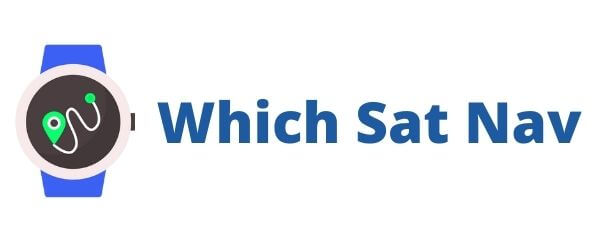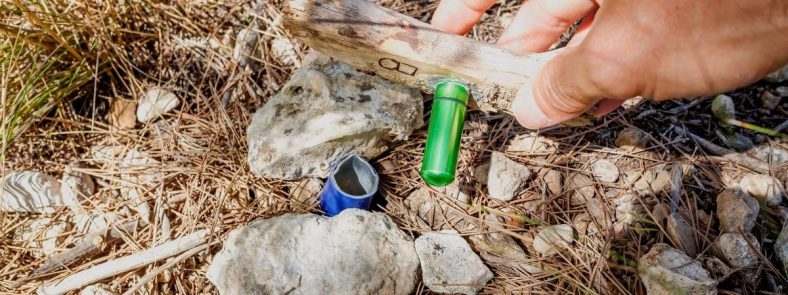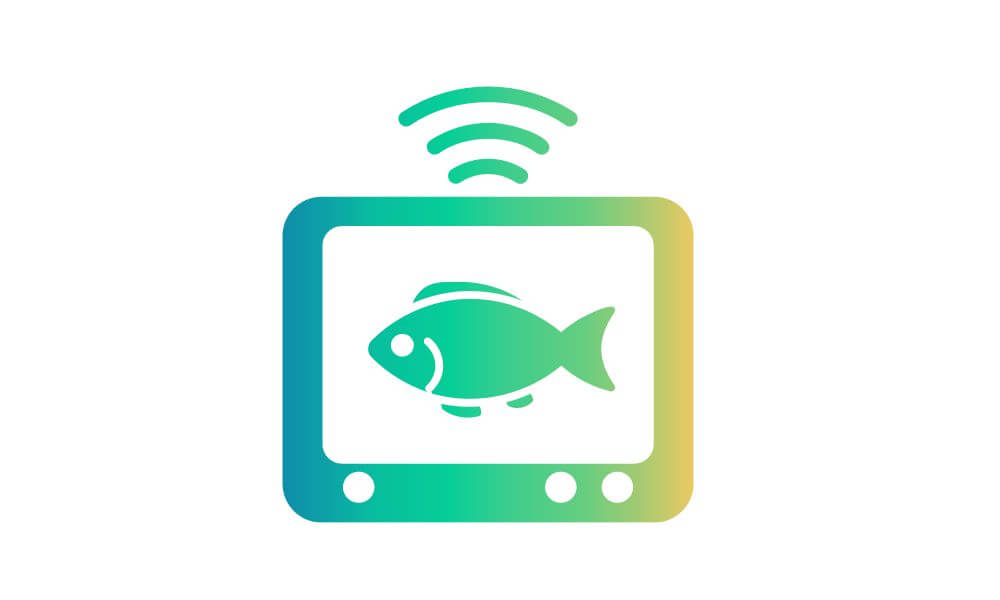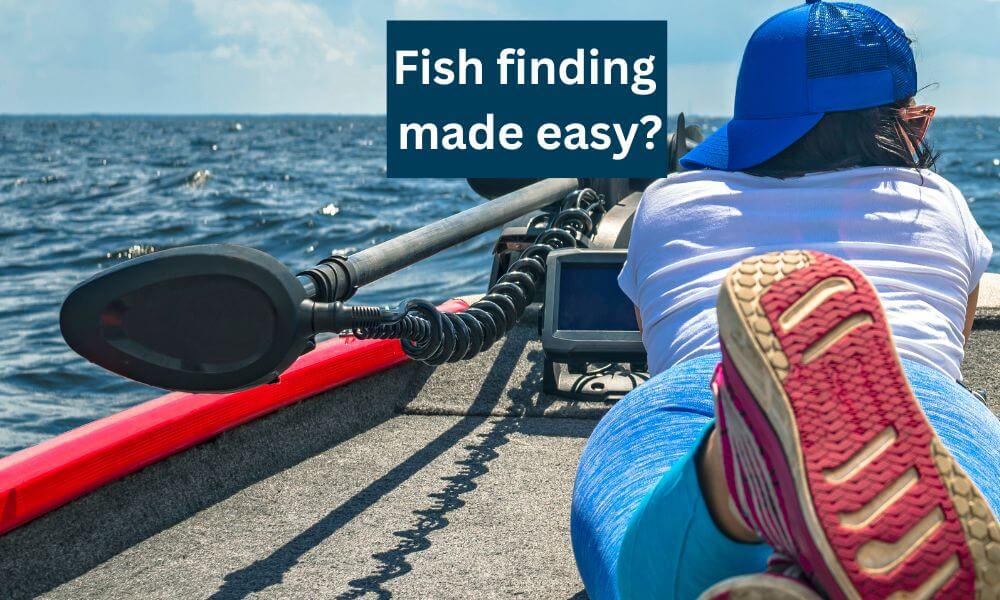Geocaching is a fun outdoor activity that involves searching for treasure. It gets you exploring the great outdoors, getting active, and even solving some clues in order to find the treasure. Sounds exciting, right?
The great thing about geocaching is that it’s an activity that’s suitable for everybody. Anybody can get involved from primary aged children to senior citizens. In other words, it’s an activity that can be enjoyed by the whole family. Everybody gets the opportunity to try out their problem-solving skills and play detective in the great outdoors.
Ok, so hopefully you really like the idea of geocaching. But how does it work and what do you need to get started? Let’s take a more in-depth look at how to start geocaching and how you can get involved in the world’s largest treasure hunt!
Benefits of Geocaching
- It’s a fantastic fun
- Suitable for all ages
- It’s an outdoor activity
- It keeps you fit
- You get to solve puzzles
- Friendly worldwide community
What Exactly is Geocaching?
Geocaching involves using a GPS enabled device in order to navigate to a certain location where there is a hidden cache. In the world of geocaching, the treasure that you are seeking is known as the ‘cache’. The cache is simply a waterproof container that has a logbook inside. There are a huge number of cache types out there waiting to be found. Once you find the cache that you will need to sign the log. You will also be logging your find online to share with the community.
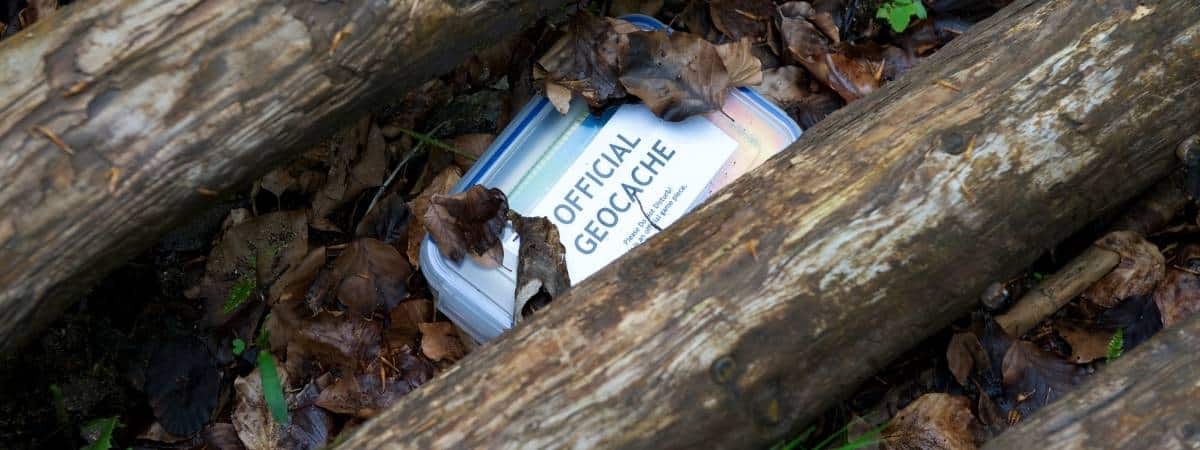
The purpose of the game, therefore, is to search for and find the cache location. Believe it or not, there are millions of geocaches hidden all over the world. I’m pretty certain that no matter where you are in the world that you would be fairly close to a cache. And guess what? There are also millions of people all over the world who play the game too. In fact, there is a worldwide and friendly community of like-minded people out there playing the game.
Geocaches can be found in cities, suburban areas, forests, parks, and probably anywhere else you can think of, pretty crazy, right? In fact, I have found caches in trees, lamposts, under bridges, behind monuments, and even attached to road signs.
Getting Started
Getting started with your geocaching adventures is really super easy. All you have to do is follow these simple steps:
- Sign up for a Free account on geocaching.com
- Choose a cache
- Begin your search
- Find your cache
- Log your find
You will also need to have with you a GPS device. This can be your smartphone or a handheld GPS like these. The only other item that you absolutely must have is a pen. You’ll need this in order to sign the logbook once you get a result and find the cache.
1. Sign up
To get started you will need to create a free account over at geocaching.com. Simply click on the top right button where it says Sign Up. Now all you have to do is to create your account using either your Google, Facebook, or Apple details. Alternatively, you can also just use your email address. Choose a Username for yourself – this is what you will become known as within the Geocaching Community so it’s a good idea to make it a good one!
2. Choosing A Cache
Now it’s time to begin your geocaching adventures for real! Before we choose your first geocache let’s cover some of the basics. This will ensure that you choose the right caches to get started. After all, there’s nothing more frustrating than struggling to find the really difficult caches at the outset.
Here are some of the features that are included with every geocache:
- Name & Description – all the Geocaches will have a name and a description. There can be some clues to be found in the name.
- Level of Difficulty – all the ratings are provided on a scale from 1 to 5, with 1 being the easiest and 5 being the most difficult. The higher difficulty caches will probably involve you having to solve a number of puzzles before finding the final location. To begin with I would recommend choosing a cache with a difficulty rating of 1 or 2. Once you get into the swing of things then you can very quickly start finding those more challenging and problematic caches.
- Terrain Rating – here you will find an indication of the level of physical exertion that may be required in searching for a particular cache. Perhaps you’ll have to climb over a fence or search through some dense woodland? Either way, the higher the rating, the more difficult the task ahead.
- Size – as the name rather helpfully suggests this provides you with the size of the cache. Geocaching containers come in all sizes and shapes. These range from micro-sized or nano caches as small as your thumbnail to large grocery sized containers. All of the containers should be waterproof in order to protect the logbook hidden inside.
Ok, now we’ve covered some of the more basic details let’s look at how you can choose your first geocache.
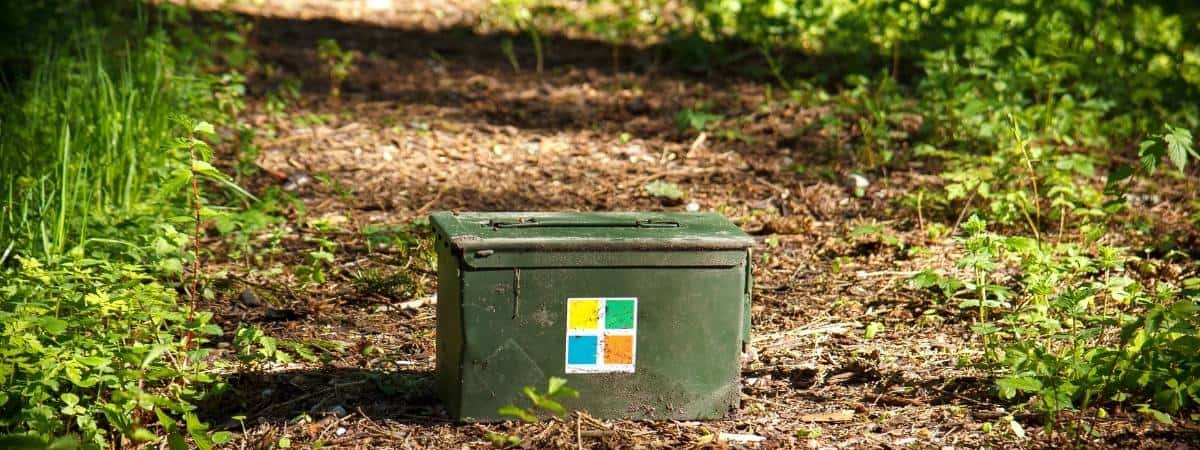
On the main screen, there are a couple of different ways that you can search the geocaching database:
Using the Search Bar
Type in the area you want to search and you will be provided with a list of nearby geocaches. These are all listed by order of distance from your initial location. You also get a snapshot of the difficulty, the size along with the terrain rating. You are also provided with some additional info such as when the cache was first hidden and more interestingly perhaps when it was last found.
You also have the option of searching using the map. It works in largely the same way as you have a search box that you can use to begin a search. What I like about searching this way is that you get to see the location of each cache on the map. This can make it easier to plan an afternoon of geocaching as you can identify clusters of caches within a particular area.
3. Begin Your Search
Once you have chosen and are happy with the cache you want to find, then you simply click ‘Start’, and off you go. You will see where you are currently located and the location and coordinates of the cache. The app tells you where you need to get to and therefore, you’ll have to make your way over there. How to get there is entirely up to you – you could cycle, walk, use public transport, drive, fly, etc
As you begin walking you will see a digital compass on your screen. The needle of the compass is there in order to help you stay on track. One end of the needle is colored red and as long as you keep this end straight in front of you, then you will keep heading in the right direction. The display will also tell you how far away you are from the location of the cache.
When you get within close proximity of the geocache coordinates it’s time to start looking around in earnest. In other words, put down your electronic device, walk around and search using your hands and eyes. After all, this is the fun part as you will need to use your wits in order to find the treasure!
Beware of Muggles Rule
There are plenty of non-geocachers out and there so please be careful. After all, we don’t want people who don’t play geocaching to find these caches and perhaps even disabling them. We want the geocaches to remain where they are so other players can enjoy finding them in the future.
4. Finding your Cache
Finding the geocache is not always straightforward. Sometimes you will need to solve a few clues or put your hands and feet in places that you wouldn’t ordinarily put them. yes, it may involve walking in a muddy field or putting your hand over the other side of an overgrown hedge. Either way, you need to have a sense of adventure and to be prepared for the unexpected. Geocachers can, after all, be a rather creative bunch when it comes to hiding these caches!
Geocaches won’t be buried underground but they might be covered with some leaves, hidden within the bark of a tree or attached magnetically to a railing. As you might have guessed, I’m really not joking as there are some seriously imaginative people playing this game!
Bear in mind the size of the cache that you are looking for. After all, there’s probably no point in searching a signage pole too hard if you know your container is the size of a shoebox. You might, however, find a film canister taped and attached by a magnet behind a metal sign.
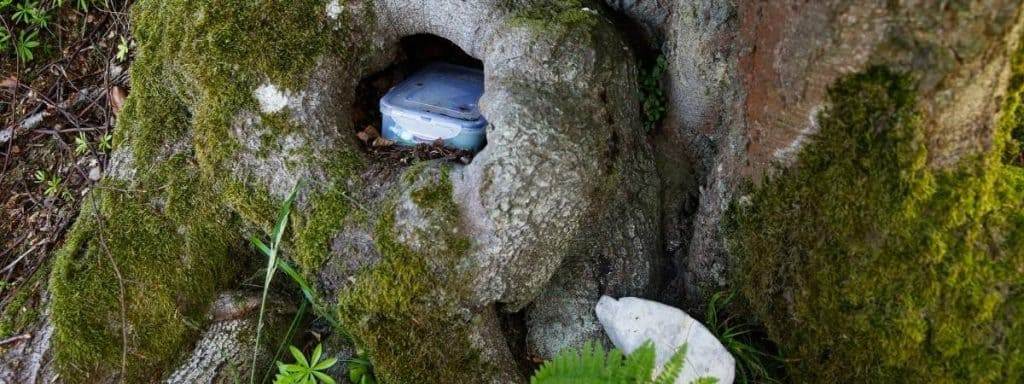
You get a great sense of achievement when you eventually find the geocache. It’s a great feeling and it’s something that should be celebrated. I know my kids absolutely love finding them and they are super competitive about who found it first!
5. Log your Find
Once you have found the cache it’s time to move onto the final step – recording your find within the cache logbook.
Within the container, you will more than likely find a logbook or a piece of paper along with a pen. You should now sign the book with your username and the date. It’s also quite interesting to see who else has found this particular cache!
Sometimes you’ll find little trinkets within the container. These items shouldn’t have any real monetary value and are purely there for interest. My kids love to find these little treasures and it really does provide an additional impetus for them to keep going. The only rule with these trinkets and treasures is, if you take something out then you must replace it with something else. We normally have a small toy car, an action figure, or sometimes a wacky coloring pen with us for this purpose.
You can also log your find on the app using your smartphone or handheld GPS. This lets the cache owner know that you’ve found their cache. It’s typical to leave them a message and thank them for going to the trouble of placing it in the first place. The number of finds you have under your name will also increase. If you’re anything like me then this alone provides a real sense of achievement!
It’s also super important to put the cache container back exactly where you found it, so other players can also enjoy finding it.
Hopefully, you’ve found out guide on how to start geocaching useful and now realize it’s super easy to get going. It’s now time for you to begin your very own outdoor geocaching adventure. Start your cache hunt and most importantly of all……
Happy geocaching!
FAQs
What is the point of geocaching?
Geocaching is the world’s largest treasure hunt. It’s an exciting game where you use GPS technology to go and find the treasure (also known as geocaches). Everybody can get involved no matter what age. It’s an activity that takes place outdoors, it gets you active and you get to explore new areas that you may not have otherwise found.
There are a few million geocaches available to be found so you will never run out. Oh, and did I tell you that there is a super friendly worldwide community that all share a common theme – a passion for geocaching!
What do you need to go geocaching?
The only things you will need are the following:
- A GPS enabled device – smartphone or a handheld GPS
- An account at Geocaching.com
- A pen to sign the logbook
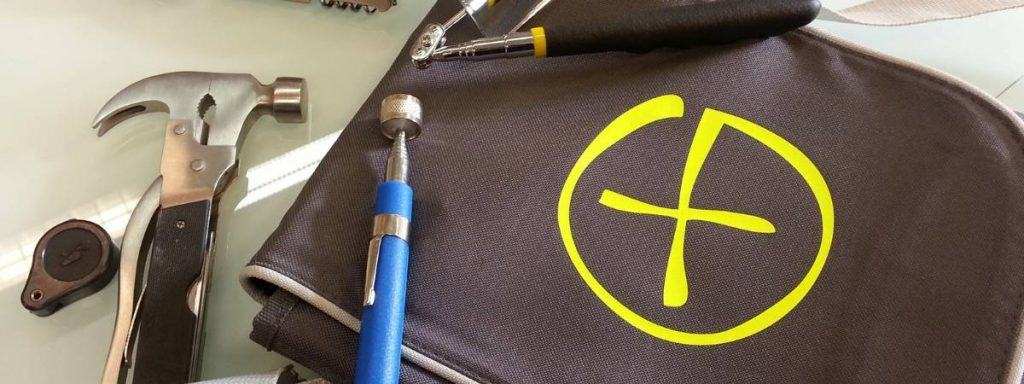
Is geocaching suitable for families?
Geocaching is a super fun activity that can be enjoyed by all ages. It’s suitable for children and senior citizens. My only advice is to ensure that you go searching for geocaches that are suitable for the players in your team. There’s not much sense in choosing caches that require solving complicated math puzzles if your 7 years of age! Likewise, it’s not the best option to go looking for a cache up a steep mountain if you struggle to walk up difficult terrain.
As long as you search for suitable geocaches then it’s a great way for the full family to spend a day.
How can I get better at geocaching?
You’ll find lots of different guides online and there are plenty of geocaching videos to be found on various platforms. However, in our opinion, the best way to get better at geocaching is simply to get out there and play. The more geocaches you find, then the easier it becomes. In my opinion, the more you do it, then your geocaching ‘six sense’ powers will become heightened and tingle all the more!
Are there any geocaches near me?
Yes, there are more than likely plenty of geocaches hidden near you. I’m saying that while not knowing where you might be located, however, there are so many of them hidden all over the world that I’m pretty confident!
To see where your nearest geocaches are located use the search by map function on the geocaching app.
Can I geocache with a smartphone?
Yes, you most certainly can use a smartphone for geocaching. You will need to have the GPS function enabled and will have to download the app from Google Play or the Apple store.
Many geocachers however choose to have a dedicated handheld GPS as it provides greater accuracy, does not drain the battery life of their phones, and allows them to download huge numbers of caches directly onto their device. A great budget option would be to look at something like the Garmin eTrex10.
Does geocaching cost money?
Geocaching is a free activity so it does not have to cost you any money.
There is, however, an option to upgrade to a premium membership for some additional features and extra special geocaches. The cost of this upgrade if you decide to do so is €29.99. This is payable annually.
To be clear, however, you can most certainly enjoy geocaching without the need for spending any money.
How popular is geocaching?
It is reported that there are over 7 million active geocachers worldwide. That’s a huge number of people heading out on weekends or on their lunch breaks in order to find a geocache. Trust me, when you get started it can be pretty hard to stop!
How many geocaches have been hidden?
A few years back the geocaching community celebrated the hiding of the 3 millionth geocache. As this was a few years back I’m guessing that it’s pretty reasonable to assume that this figure has been steadily growing since then.
